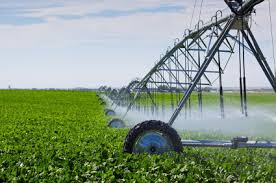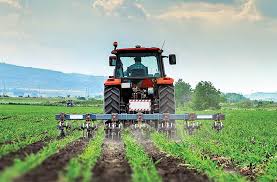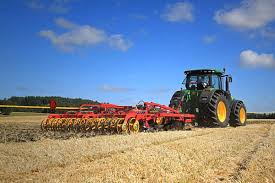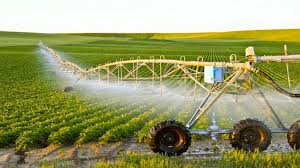Farming techniques have evolved significantly over time, influenced by technological advancements, environmental considerations, and the growing demand for food. Understanding these techniques is crucial for improving agricultural productivity and sustainability.
This guide will explore various farming methods, including traditional, modern, organic, and innovative practices like precision agriculture, hydroponics, and aquaponics.
Traditional Farming Techniques
Traditional farming techniques are methods that have been passed down through generations, often using practices developed over centuries. These methods typically rely on local resources and knowledge.
1. Crop Rotation: Crop rotation involves alternating the types of crops grown on a particular piece of land over several seasons. This practice helps maintain soil fertility, reduce pest and disease cycles, and enhance biodiversity. For instance, legumes, which fix nitrogen in the soil, can be planted after nitrogen-depleting crops like cereals.
2. Intercropping: Intercropping is the practice of growing two or more crops simultaneously on the same field. This technique maximizes land use, enhances biodiversity, and can reduce pest infestations. For example, planting corn alongside beans allows the beans to climb the corn stalks, optimizing space and resource use.
3. Agroforestry: Agroforestry integrates trees and shrubs into agricultural landscapes. This practice promotes biodiversity, improves soil health, and provides additional income through timber or fruit production. Trees can also provide shade and wind protection for crops.
4. Organic Fertilization: Traditional farming often relies on organic fertilizers such as compost, manure, or green manures (cover crops). These materials improve soil structure and fertility while minimizing chemical inputs, promoting a healthier ecosystem.
5. Conservation Tillage: This method involves minimizing soil disturbance and retaining crop residue on the field to enhance soil health and reduce erosion. Traditional plowing is replaced with practices that keep soil covered, thus preserving moisture and organic matter.
Modern Farming Techniquesl

Modern farming techniques involve the use of advanced technology and practices that increase efficiency, productivity, and sustainability.
1. Mechanization: The use of machinery, such as tractors, harvesters, and irrigation systems, significantly reduces labor costs and increases efficiency. Mechanization enables farmers to cultivate larger areas more quickly, improving overall productivity.
2. Chemical Fertilizers and Pesticides: Modern farming often employs synthetic fertilizers and pesticides to boost crop yields and protect against pests and diseases. While these inputs can enhance productivity, they also raise concerns about environmental impact and sustainability.
3. Monoculture: Monoculture is the practice of growing a single crop over a large area. While this method can maximize short-term yields, it often leads to increased vulnerability to pests and diseases and can degrade soil health over time.
4. Irrigation Technology: Modern irrigation methods, such as drip and sprinkler systems, provide precise water application, enhancing water use efficiency. These technologies are especially beneficial in arid regions, enabling consistent crop production.
5. Biotechnology: Biotechnology involves genetic modification to create crops that are resistant to pests, diseases, and environmental stresses. Genetically modified organisms (GMOs) can lead to higher yields and lower pesticide use but are often subject to public debate and regulation.
Organic Farming Techniques
Organic farming emphasizes sustainable practices that enhance biodiversity, soil health, and environmental quality without synthetic inputs.
1. Organic Fertilizers: Organic farming utilizes natural fertilizers like compost, manure, and bone meal. These materials enhance soil structure, fertility, and microbial activity while reducing dependency on chemical fertilizers.
2. Biological Pest Control: Instead of chemical pesticides, organic farmers use biological controls such as beneficial insects (e.g., ladybugs, predatory wasps) to manage pest populations. This approach minimizes chemical residues and enhances ecosystem health.
3. Crop Diversity: Organic farming promotes the cultivation of diverse crops to improve resilience against pests and diseases. Crop diversity enhances soil health and provides a wider range of nutrients for consumers.
4. Cover Cropping: Cover crops are planted during off-seasons to prevent soil erosion, improve soil fertility, and suppress weeds. They also enhance biodiversity and create habitat for beneficial organisms.
5. Natural Weed Control: Organic farmers employ techniques such as mulching, hand weeding, and the use of cover crops to manage weeds naturally, minimizing reliance on herbicides.
Precision Agriculture
Precision agriculture (PA) utilizes technology to monitor and manage field variability in crops for optimal productivity and sustainability. It involves:
1. GPS Technology: Global Positioning System (GPS) technology enables farmers to track and manage their fields with high accuracy. This allows for precise applications of inputs, reducing waste and increasing efficiency.
2. Soil and Crop Sensors: Sensors are used to collect data on soil moisture, nutrient levels, and crop health. This information helps farmers make informed decisions about irrigation, fertilization, and pest management.
3. Data Analytics: Data collected from sensors and satellite imagery are analyzed to provide insights into crop performance, allowing for better resource allocation and management strategies.
4. Variable Rate Technology (VRT): VRT enables farmers to apply fertilizers and pesticides at varying rates across a field, optimizing input use based on specific crop needs and soil conditions.
5. Drones and Remote Sensing: Drones are employed for aerial surveillance and monitoring of crops, enabling farmers to identify issues such as pest infestations, disease outbreaks, or irrigation problems from above.
Hydroponics and Aquaponics
Hydroponics and aquaponics are innovative methods that enable food production without soil.
Hydroponics:
Hydroponics involves growing plants in nutrient-rich water solutions. Key aspects include:
1. Nutrient Solutions: Plants receive nutrients directly from the water, allowing for faster growth and higher yields.
2. Space Efficiency: Hydroponics can be practiced in limited spaces, making it ideal for urban agriculture and areas with poor soil conditions.
3. Water Conservation: This method uses significantly less water than traditional farming, as the water is recirculated and reused.
Aquaponics:
Aquaponics combines aquaculture (raising fish) with hydroponics (growing plants). The system works as follows:
1. Symbiotic Relationship: Fish waste provides essential nutrients for plants, while plants help filter and clean the water for the fish, creating a sustainable, closed-loop system.
2. Dual Production: Farmers can harvest both fish and plants, diversifying income and enhancing food production.
3. Environmental Benefits: Aquaponics systems use less water and land compared to traditional farming, making them a sustainable option for food production.
Agroforestry Practices
Agroforestry integrates trees and shrubs into agricultural landscapes, enhancing productivity and sustainability. Key practices include:
1. Alley Cropping: Alley cropping involves planting rows of trees or shrubs alongside crops. This practice provides shade, reduces wind erosion, and improves soil fertility through leaf litter decomposition.
2. Silvopasture: Silvopasture combines forestry and grazing practices. Livestock graze under the canopy of trees, which provides shade and shelter while enhancing biodiversity and soil health.
3. Forest Farming: Forest farming incorporates the cultivation of high-value specialty crops under a managed forest canopy. This practice maximizes land use, promotes biodiversity, and provides an additional income source.
4. Riparian Buffers: Planting trees and shrubs along waterways helps prevent soil erosion, filter pollutants, and improve water quality. Riparian buffers enhance habitat for wildlife and promote ecosystem health.
5. Mixed Cropping: This practice involves growing a mix of crops and trees together. It enhances biodiversity, improves soil structure, and reduces pest outbreaks by disrupting monoculture practices.
Read Also: Tangerine and Mandarin Rind: Economic Importance, Uses and By-Products
Conservation Tillage

Conservation tillage refers to farming practices that minimize soil disturbance, thereby improving soil health and reducing erosion. Key aspects include:
1. No-Till Farming: In no-till farming, the soil is left undisturbed, and crops are planted directly into the residue of previous crops. This practice conserves soil moisture, enhances soil structure, and increases organic matter content.
2. Reduced Tillage: Reduced tillage involves fewer passes with machinery, minimizing soil disruption. This method helps maintain soil integrity, reduces erosion, and preserves beneficial microorganisms.
3. Cover Crops: Planting cover crops during fallow periods protects the soil from erosion, improves soil fertility, and enhances water retention. Cover crops also contribute organic matter to the soil.
4. Mulching: Applying organic or inorganic materials on the soil surface helps retain moisture, suppress weeds, and prevent erosion. Mulching improves soil health and reduces the need for chemical herbicides.
5. Strip Tillage: This method involves tilling only a narrow strip of soil where crops are planted, leaving the rest of the field undisturbed. Strip tillage helps maintain soil structure and improve water retention.
Crop Rotation and Diversification
Crop rotation and diversification involve alternating and mixing different crops in the same field over time. This practice enhances soil health and reduces pest and disease pressures. Key points include:
1. Nutrient Management: Different crops have varying nutrient requirements and contributions. Rotating crops replenishes soil nutrients and reduces the need for synthetic fertilizers.
2. Pest and Disease Control: Rotating crops disrupts pest and disease life cycles, reducing reliance on chemical pesticides and promoting natural pest control.
3. Soil Structure Improvement: Diverse root systems from different crops enhance soil structure and aeration, promoting better water infiltration and root growth.
4. Risk Mitigation: Crop diversification reduces the risk of total crop failure due to pests, diseases, or unfavorable weather conditions, providing more stable income for farmers.
5. Enhanced Biodiversity: Growing a variety of crops supports beneficial insects and soil organisms, contributing to overall ecosystem health and resilience.
Integrated Pest Management (IPM)
Integrated Pest Management (IPM) is a holistic approach to managing pests that combines various control methods. Key components include:
1. Monitoring and Assessment: Regularly monitoring pest populations helps farmers make informed decisions about control measures, reducing unnecessary pesticide applications.
2. Biological Control: Utilizing natural predators and parasites to control pest populations is an effective, environmentally friendly strategy. For example, introducing ladybugs to manage aphid populations.
3. Cultural Control: Altering farming practices, such as crop rotation and intercropping, can disrupt pest life cycles and reduce infestations.
4. Mechanical Control: Physical barriers, traps, and other mechanical methods can help control pests without chemical inputs.
5. Chemical Control as a Last Resort: If pest populations exceed economic thresholds, targeted and selective use of chemical pesticides is employed, minimizing environmental impact and protecting beneficial organisms.
Read Also: Monkeys: Species and Rare Interesting Facts
Benefits of Innovative Farming Techniques

1. Enhanced Productivity: These techniques often lead to increased crop yields, better resource use, and improved soil health, contributing to overall agricultural productivity.
2. Environmental Sustainability: Innovative practices reduce the reliance on chemical inputs, promote biodiversity, and help conserve natural resources, fostering a healthier ecosystem.
3. Economic Viability: Farmers can reduce costs associated with chemical inputs and improve their income through diversified cropping systems and sustainable practices.
4. Resilience to Climate Change: Innovative techniques enhance the resilience of farming systems to climate-related stresses, such as droughts and pests, ensuring stable food production.
5. Improved Food Security: By increasing productivity and sustainability, these practices contribute to enhanced food security for communities and nations.
Challenges in Adopting New Farming Techniques
Despite their benefits, adopting innovative farming techniques can present challenges:
1. Initial Costs: Investing in new technologies or practices can require significant upfront capital, which may deter some farmers, especially smallholders.
2. Knowledge and Training: Farmers may need additional training to implement innovative techniques effectively. Lack of access to education and resources can hinder adoption.
3. Risk of Failure: New practices may not always yield immediate results, leading to reluctance among farmers to transition from traditional methods.
4. Market Access: Farmers may face difficulties accessing markets for their sustainably produced goods, limiting their economic benefits.
5. Policy and Regulatory Barriers:
Inadequate policies and regulations can stifle innovation and limit farmers’ ability to adopt new practices.
Conclusion
Innovative farming techniques, including agroforestry, conservation tillage, crop rotation, and integrated pest management, are vital for promoting sustainable agriculture. While challenges exist in adopting these methods, their benefits in enhancing productivity, sustainability, and resilience to climate change make them essential for the future of food production. Embracing these practices can lead to a healthier environment, improved food security, and economic viability for farmers.
Understanding various farming techniques, from traditional to modern and innovative methods, is essential for addressing global food challenges. By combining the strengths of these practices, farmers can improve productivity, sustainability, and resilience in the face of changing environmental conditions and growing population demands.
Do you have any questions, suggestions, or contributions? If so, please feel free to use the comment box below to share your thoughts. We also encourage you to kindly share this information with others who might benefit from it. Since we can’t reach everyone at once, we truly appreciate your help in spreading the word. Thank you so much for your support and for sharing!
Read Also: Benefits of Studying Agricultural Economics

